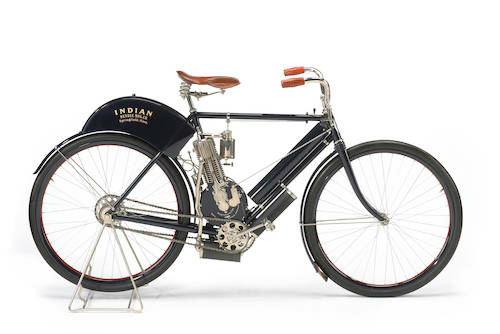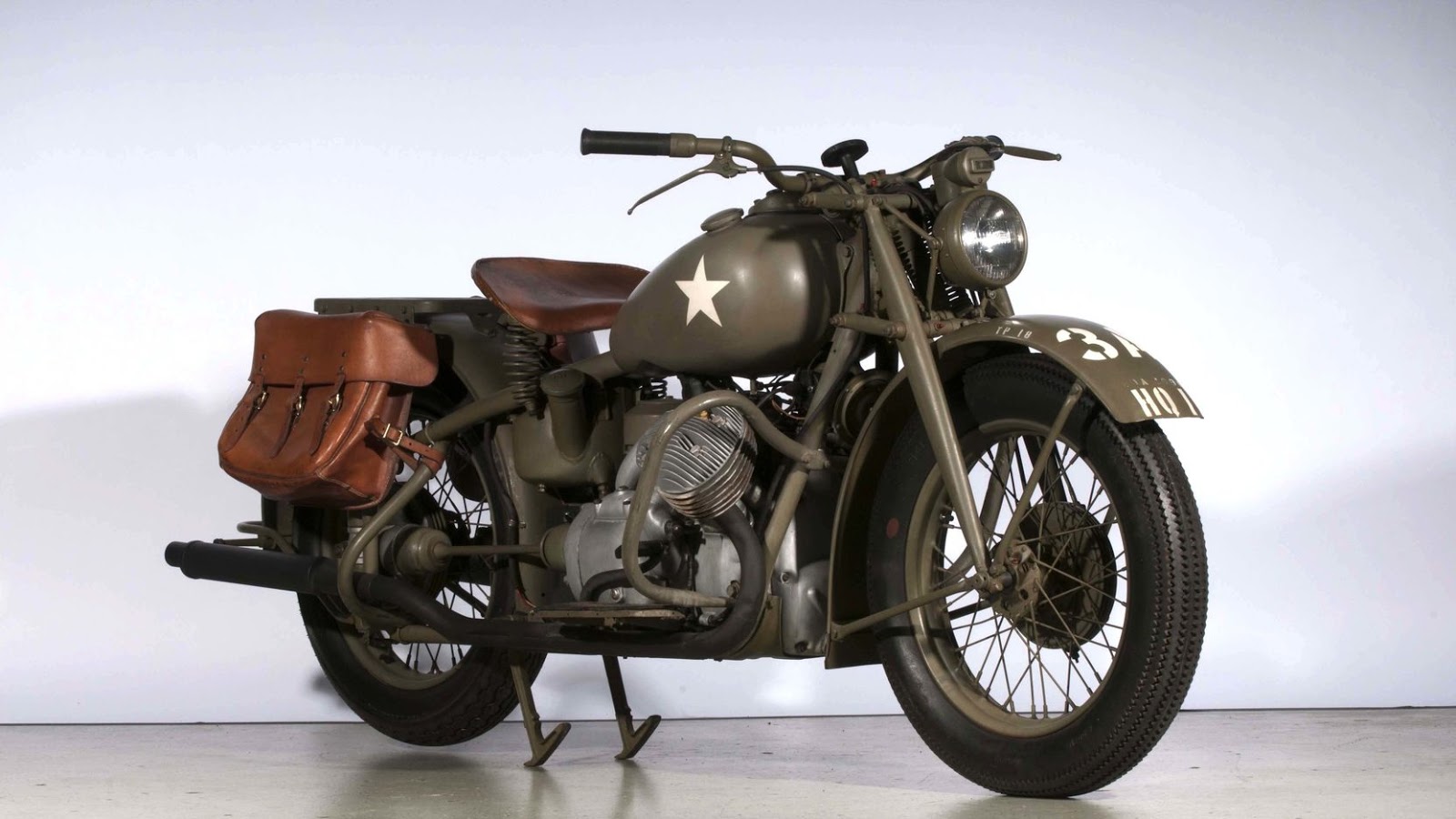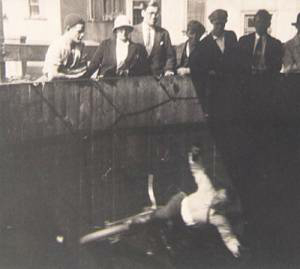A young motorcycle racer and engineer named Charles Franklin was luckily available just when his talents were needed most.
Franklin had been hired from the race track in 1914 to open an Indian depot in Dublin, Ireland. Franklin opened the depot in 1915, but trade politics between England and the U.S. closed it's doors in just a few short months. Recognizing his talents, the company offered him a position in the design department in Springfield Massachusetts in 1916.
Franklin had been hired from the race track in 1914 to open an Indian depot in Dublin, Ireland. Franklin opened the depot in 1915, but trade politics between England and the U.S. closed it's doors in just a few short months. Recognizing his talents, the company offered him a position in the design department in Springfield Massachusetts in 1916.
Charles Franklin immediately set to work. His designs soon set a new standard for the Indian brand, among his first and most famous was the 1920 Scout. He also designed the Indian Prince single cylinder of 1925, approved the acquisition and subsequent redesigns of the Ace 4 cylinder in 1927, and redesigned the Scout in 1928 into what is now known as the legendary Scout 101.
While Charles Franklin's designs were proving successful on the sales floor, the corporate suits running the show were using the profits to play the stock market. It was the "Roaring Twenties" and the future looked bright. But, as fate would have, the stock markets crashed in October of 1929, plunging the economy into the Great Depression.
The company suddenly found itself in turmoil. Those in charge began to help themselves to company assets, with one eye on the exit, as they waited for what was sure to be the end. As fate would have it, an Indian motorcycle enthusiast with the financial means, saw the opportunity and seized it.
Eleuthere Paul du Pont was born April 24th, 1887. From a young age he had an interest in all things mechanical. As a teen he built a small engine to attach to a bicycle. Not satisfied, he later acquired an early Indian "Camelback" single to tinker with and modify. (Called "Camelback" because of the humped fuel tank over the rear wheel) Young Paul studied engineering in school and by 1916 had established a small marine engine company, with a number of patents in his name. By 1919 his attention turned to automobiles and he founded DuPont Motors Co., known for manufacturing luxury autos during the 1920s.
In 1923, the Hendee Mfg. Co. officially changed it's name to the Indian Motocycle Co. (No "R" to stand out from other motorcycle manufacturers) and Paul's brother Francis du Pont bought $300,000 worth of shares. In all appearances, a good investment at the time.
By 1930, Indian was on the verge of bankruptcy, losing hundreds of thousands annually, not only due to the stock market crash, but also reported corruption at the top. The du Pont family was in danger of losing substantial investments. Paul saw that the Indian Co. was ripe for a takeover. After some negotiations and dealings, the DuPont car company merged with Indian, auto production was halted, and E. Paul du Pont became CEO of the Indian Motocycle Co. Paul and his staff soon put an end to the corruption, took stock of what hadn't yet been pilfered, and set to work building motorcycles.
During this time the transportation needs of the country was changing. Ford's assembly line had brought the cost of the automobile down to where the common man could afford a car. Motorcycles, once competing with the auto as affordable transportation for the masses, was now viewed as a leisure item. The change had drivin most early motorcycle manufacturers out of business. Only Indian, Harley Davidson, and Excelsior remained. With no immediate end to the Depression in sight, Ignaz Schwinn ended Excelsior's motorcycle production in September of 1931, leaving Indian and Harley Davidson alone in the market.
Paul du Pont knew that people wouldn't buy motorcycles because they needed one, but because they wanted one. He put his chief designer Charles Briggs Weaver to work remaking Indian's image.
Briggs Weaver was more than an auto designer, he was an artist. Schooled as a jewelry designer, it's said that he could just as easily design a sailboat or carve a sculpture. Under Paul du Pont"s direction, he was responsible for introducing the streamlined art-deco styling that became popular in the early 30s, and copied by the competition. The elaborate sheet metal and tank mounted dash were a result of Weaver's artistic influence.
In addition to design changes, Indians now were available in no less than 24 splendid colors. Up until this time, production was hindered by the drying time of the paint, hence the reason for Fords being available "in any color you want as long as it's black." (Black dried the fastest) The DuPont Motor Company had pioneered fast drying nitrocellulose lacquer auto paint in the early 1920s. (Ever hear of DuPont Paints?) That paint was now available for Indian motorcycles, when in the late 20s and early 30s, Harley Davidsons were only offered in olive green.
Under Paul du Pont"s guidance, Indian also launched a successful racing campaign in the newly formed AMA Class C racing which was formed for street legal machines. With only one other manufacturer competing, the rivalry between brands reached a fever pitch, with both makes having a following of loyal fans to this day.
Much of Paul du Pont"s success was due to his hands on approach, assisting in design and testing new models. He was personally involved in the development of the Model 841. The 841 was a shaft driven machine with a V-twin set a right angle to the usual configuration. It was offered to the military to fulfill the war contract but few were delivered before the contact was cancelled. Although it never became popular with the public, the 841 was Paul du Pont"s favorite model and personal ride.
Paul du Pont"s leadership brought Indian Motorcycles from the verge of collapse in 1930, to record profit levels in 1939. The company's success made it attractive to other potential investors. As du Pont"s health began to fail in the 1940s, retirement began to look attractive. In 1945, an investor named Ralph Rogers bought controlling interest in the Indian Motocycle Co. Paul du Pont turned over operations on November 1st, 1945 and retired to his family estate. He passed away September 26, 1950 at the age of 63. His influence and legacy can still be seen in the war bonnet logos, the swooping, full fenders, the colorful paint schemes, and the art-deco design touches of Indian motorcycles to this day.

















